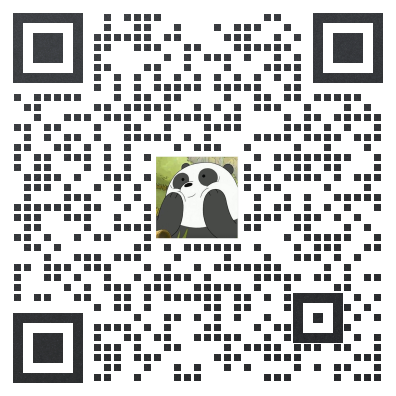BrainWave - 21 Altered States
Binaural Meditation & Sleep
开发者: Banzai Labs
808天9小时
最新版本上线距今
0
近1年版本更新次数
2009-03-23
全球最早版本上线日期
版本: 9.4.1
版本更新日期
2022-09-07

BrainWave - 21 Altered States
Binaural Meditation & Sleep
更新日志
Thanks for making the BrainWave Series the Top-Ranked Binaural Apps in the App Store for 12 Years! * This update improves the iTunes integration and background mode usability.
* Headphones/Earbuds must be worn for Binaural Tones to be Effective.
* To combine Brainwaves and Audio from Another App use the "Other App" or "Ambience + Other" option for the Background Mode in Background Settings.
* This update improves UI support for new devices.
* Added the ability to play and pause audio using Remote Controls *only* when using Brainwaves with the "Ambience Only" background mode. In modes that allow other audio apps or iTunes Music to be playing these controls will only affect iTunes or the other app. This is because in modes where our app allows other audio to play that other app becomes the "Now Playing" app--and there can be only one "Now Playing" app on iOS.
* If the audio stops when the app is backgrounded or the screen locks please restart the device with a full shutdown as this is the result of low RAM memory which causes iOS to suspend background audio.应用描述
Combine Mind-Altering Binaural Sequences with Soothing Nature Sounds, Ambient Music, your own iTunes Music (with the built-in iTunes playlist creator), or Audio from apps like Spotify and Audio Book Readers. * Powerful Binaural Programs for Lucid Dreaming, Mindful Meditation, Dreamy Sleep, Astral Projection, Zen Meditation and much more! * Universal app with built-in UIs for iPad, iPhone/iPod Touch, iPhone 5/6/6+ * Different states of mind are associated with specific brainwave frequencies that would inaudible if played directly, but can be induced by playing two different audible binaural tones into each ear, which, after being processed by the brain, are perceived as an inaudible low frequency beat matching the target brainwave frequency. As you listen your brainwaves fall into step with this inaudible beat, and after several minutes synchronize with the target frequency.
BrainWave Altered State uses the most advanced multi-stage binaural sequences available, combined with the flexibility to choose from a range of relaxing ambient backgrounds, other audio apps, or your own iTunes Music, allowing your mind you to relax and synchronize with your desired state. It achieves this using our unique process called Progressive Brainwave Entrainment.
*** Progressive Brainwave Entrainment ***
Progressive Brainwave Entrainment algorithms use layers of frequencies and carrier signals assembled in precise sequences to create profoundly unique experiences. Each program gently brings your brainwave frequencies to your desired state using a more natural frequency progression.
*** Advanced Features ***
- 20 Brainwave programs each specially designed for a different situation and desired mental state.
- 17 ambient background sounds to choose from.
- Independently adjustable ambient sound volume.
- Visual timer countdown indicator.
- Automatic storage of preferred brainwave program and ambient background.
- Ability to set your own custom program duration.
* Programs Included *
- Chakra Meditation: A series of balanced, meditative brainwave programs each taking you to a different, deeper meditative state, ending in the ultimate state of meditation and calm.
- Euphoric Bliss: The ultimate brainwave program designed to gently bring your mind through a series of uplifting states, culminating in a state of euphoria and bliss. This program will truly make your mood soar.
- Lucid Beta Dreams: This program combines elements of meditative and dreaming frequencies to create a state where you can experience waking dreams and truly escape. Lucid dreaming is a very unique state of consciousness where you will find yourself slipping in out of dreams while remaining aware of them.
- Tranquil Thoughts: Designed simply to relax, this program progressively drops your mind into deeper states of relaxation to help you unwind and reduce stress.
- Inspired Creativity: Creates an elevated state of creativity by combining a series of focus, concentration and meditative frequencies to help you open your mind to new ideas and boost creativity.
- Floating: A unique meditative program that combines lower frequency meditative sequences with higher frequency lucid dreaming programs to create a relaxed, yet heightened state of awareness.
- Quiet Mind: Designed to help you clear your mind and empty your thoughts for a deeply relaxed state of mind.
- Mindful Meditation: Achieve a calm, centered state of mindfulness.
- Other Programs:
- Morning Zen
- Natural High
- Awakened Mind
- Deep Reflection
- Astral Projection
- Zen Meditation
- High Beta Dreams
- Heightened Awareness
- Beta Meditation
- Gamma Meditation
- High Theta Meditation
- Full Theta Spectrum
These programs are powerful and can take effect quickly and should never be used while driving or operating machinery. If you have any medical questions, conditions or concerns please contact a physician before using any binaural program.版本: 9.4
版本更新日期
2022-08-25

BrainWave - 21 Altered States
Binaural Meditation & Sleep
更新日志
Thanks for making the BrainWave Series the Top-Ranked Binaural Apps in the App Store for 12 Years! * This update improves the iTunes integration and background mode usability.
* Headphones/Earbuds must be worn for Binaural Tones to be Effective.
* To combine Brainwaves and Audio from Another App use the "Other App" or "Ambience + Other" option for the Background Mode in Background Settings.
* This update improves UI support for new devices.
* Added the ability to play and pause audio using Remote Controls *only* when using Brainwaves with the "Ambience Only" background mode. In modes that allow other audio apps or iTunes Music to be playing these controls will only affect iTunes or the other app. This is because in modes where our app allows other audio to play that other app becomes the "Now Playing" app--and there can be only one "Now Playing" app on iOS.
* If the audio stops when the app is backgrounded or the screen locks please restart the device with a full shutdown as this is the result of low RAM memory which causes iOS to suspend background audio.应用描述
Combine Mind-Altering Binaural Sequences with Soothing Nature Sounds, Ambient Music, your own iTunes Music (with the built-in iTunes playlist creator), or Audio from apps like Spotify and Audio Book Readers. * Powerful Binaural Programs for Lucid Dreaming, Mindful Meditation, Dreamy Sleep, Astral Projection, Zen Meditation and much more! * Universal app with built-in UIs for iPad, iPhone/iPod Touch, iPhone 5/6/6+ * Different states of mind are associated with specific brainwave frequencies that would inaudible if played directly, but can be induced by playing two different audible binaural tones into each ear, which, after being processed by the brain, are perceived as an inaudible low frequency beat matching the target brainwave frequency. As you listen your brainwaves fall into step with this inaudible beat, and after several minutes synchronize with the target frequency.
BrainWave Altered State uses the most advanced multi-stage binaural sequences available, combined with the flexibility to choose from a range of relaxing ambient backgrounds, other audio apps, or your own iTunes Music, allowing your mind you to relax and synchronize with your desired state. It achieves this using our unique process called Progressive Brainwave Entrainment.
*** Progressive Brainwave Entrainment ***
Progressive Brainwave Entrainment algorithms use layers of frequencies and carrier signals assembled in precise sequences to create profoundly unique experiences. Each program gently brings your brainwave frequencies to your desired state using a more natural frequency progression.
*** Advanced Features ***
- 20 Brainwave programs each specially designed for a different situation and desired mental state.
- 17 ambient background sounds to choose from.
- Independently adjustable ambient sound volume.
- Visual timer countdown indicator.
- Automatic storage of preferred brainwave program and ambient background.
- Ability to set your own custom program duration.
* Programs Included *
- Chakra Meditation: A series of balanced, meditative brainwave programs each taking you to a different, deeper meditative state, ending in the ultimate state of meditation and calm.
- Euphoric Bliss: The ultimate brainwave program designed to gently bring your mind through a series of uplifting states, culminating in a state of euphoria and bliss. This program will truly make your mood soar.
- Lucid Beta Dreams: This program combines elements of meditative and dreaming frequencies to create a state where you can experience waking dreams and truly escape. Lucid dreaming is a very unique state of consciousness where you will find yourself slipping in out of dreams while remaining aware of them.
- Tranquil Thoughts: Designed simply to relax, this program progressively drops your mind into deeper states of relaxation to help you unwind and reduce stress.
- Inspired Creativity: Creates an elevated state of creativity by combining a series of focus, concentration and meditative frequencies to help you open your mind to new ideas and boost creativity.
- Floating: A unique meditative program that combines lower frequency meditative sequences with higher frequency lucid dreaming programs to create a relaxed, yet heightened state of awareness.
- Quiet Mind: Designed to help you clear your mind and empty your thoughts for a deeply relaxed state of mind.
- Mindful Meditation: Achieve a calm, centered state of mindfulness.
- Other Programs:
- Morning Zen
- Natural High
- Awakened Mind
- Deep Reflection
- Astral Projection
- Zen Meditation
- High Beta Dreams
- Heightened Awareness
- Beta Meditation
- Gamma Meditation
- High Theta Meditation
- Full Theta Spectrum
These programs are powerful and can take effect quickly and should never be used while driving or operating machinery. If you have any medical questions, conditions or concerns please contact a physician before using any binaural program.版本: 9.3
版本更新日期
2022-01-14

BrainWave - 21 Altered States
Binaural Meditation & Sleep
更新日志
Thanks for making the BrainWave Series the Top-Ranked Binaural Apps in the App Store for 12 Years! * This update improves the iTunes integration and background mode usability.
* Headphones/Earbuds must be worn for Binaural Tones to be Effective.
* To combine Brainwaves and Audio from Another App use the "Other App" or "Ambience + Other" option for the Background Mode in Background Settings.
* This update improves UI support for new devices.
* Added the ability to play and pause audio using Remote Controls *only* when using Brainwaves with the "Ambience Only" background mode. In modes that allow other audio apps or iTunes Music to be playing these controls will only affect iTunes or the other app. This is because in modes where our app allows other audio to play that other app becomes the "Now Playing" app--and there can be only one "Now Playing" app on iOS.
* If the audio stops when the app is backgrounded or the screen locks please restart the device with a full shutdown as this is the result of low RAM memory which causes iOS to suspend background audio.应用描述
Combine Mind-Altering Binaural Sequences with Soothing Nature Sounds, Ambient Music, your own iTunes Music (with the built-in iTunes playlist creator), or Audio from apps like Spotify and Audio Book Readers. * Powerful Binaural Programs for Lucid Dreaming, Mindful Meditation, Dreamy Sleep, Astral Projection, Zen Meditation and much more! * Universal app with built-in UIs for iPad, iPhone/iPod Touch, iPhone 5/6/6+ * Different states of mind are associated with specific brainwave frequencies that would inaudible if played directly, but can be induced by playing two different audible binaural tones into each ear, which, after being processed by the brain, are perceived as an inaudible low frequency beat matching the target brainwave frequency. As you listen your brainwaves fall into step with this inaudible beat, and after several minutes synchronize with the target frequency.
BrainWave Altered State uses the most advanced multi-stage binaural sequences available, combined with the flexibility to choose from a range of relaxing ambient backgrounds, other audio apps, or your own iTunes Music, allowing your mind you to relax and synchronize with your desired state. It achieves this using our unique process called Progressive Brainwave Entrainment.
*** Progressive Brainwave Entrainment ***
Progressive Brainwave Entrainment algorithms use layers of frequencies and carrier signals assembled in precise sequences to create profoundly unique experiences. Each program gently brings your brainwave frequencies to your desired state using a more natural frequency progression.
*** Advanced Features ***
- 20 Brainwave programs each specially designed for a different situation and desired mental state.
- 17 ambient background sounds to choose from.
- Independently adjustable ambient sound volume.
- Visual timer countdown indicator.
- Automatic storage of preferred brainwave program and ambient background.
- Ability to set your own custom program duration.
* Programs Included *
- Chakra Meditation: A series of balanced, meditative brainwave programs each taking you to a different, deeper meditative state, ending in the ultimate state of meditation and calm.
- Euphoric Bliss: The ultimate brainwave program designed to gently bring your mind through a series of uplifting states, culminating in a state of euphoria and bliss. This program will truly make your mood soar.
- Lucid Beta Dreams: This program combines elements of meditative and dreaming frequencies to create a state where you can experience waking dreams and truly escape. Lucid dreaming is a very unique state of consciousness where you will find yourself slipping in out of dreams while remaining aware of them.
- Tranquil Thoughts: Designed simply to relax, this program progressively drops your mind into deeper states of relaxation to help you unwind and reduce stress.
- Inspired Creativity: Creates an elevated state of creativity by combining a series of focus, concentration and meditative frequencies to help you open your mind to new ideas and boost creativity.
- Floating: A unique meditative program that combines lower frequency meditative sequences with higher frequency lucid dreaming programs to create a relaxed, yet heightened state of awareness.
- Quiet Mind: Designed to help you clear your mind and empty your thoughts for a deeply relaxed state of mind.
- Mindful Meditation: Achieve a calm, centered state of mindfulness.
- Other Programs:
- Morning Zen
- Natural High
- Awakened Mind
- Deep Reflection
- Astral Projection
- Zen Meditation
- High Beta Dreams
- Heightened Awareness
- Beta Meditation
- Gamma Meditation
- High Theta Meditation
- Full Theta Spectrum
These programs are powerful and can take effect quickly and should never be used while driving or operating machinery. If you have any medical questions, conditions or concerns please contact a physician before using any binaural program.版本: 9.2
版本更新日期
2021-11-24

BrainWave - 21 Altered States
Binaural Meditation & Sleep
更新日志
Thanks for making the BrainWave Series the Top-Ranked Binaural Apps in the App Store for 11 Years! * This update improves the iTunes integration and background mode usability.
* Headphones/Earbuds must be worn for Binaural Tones to be Effective.
* To combine Brainwaves and Audio from Another App use the "Other App" or "Ambience + Other" option for the Background Mode in Background Settings.
* This update improves UI support for new devices.
* Added the ability to play and pause audio using Remote Controls *only* when using Brainwaves with the "Ambience Only" background mode. In modes that allow other audio apps or iTunes Music to be playing these controls will only affect iTunes or the other app. This is because in modes where our app allows other audio to play that other app becomes the "Now Playing" app--and there can be only one "Now Playing" app on iOS.
* If the audio stops when the app is backgrounded or the screen locks please restart the device with a full shutdown as this is the result of low RAM memory which causes iOS to suspend background audio.应用描述
Combine Mind-Altering Binaural Sequences with Soothing Nature Sounds, Ambient Music, your own iTunes Music (with the built-in iTunes playlist creator), or Audio from apps like Spotify and Audio Book Readers. * Powerful Binaural Programs for Lucid Dreaming, Mindful Meditation, Dreamy Sleep, Astral Projection, Zen Meditation and much more! * Universal app with built-in UIs for iPad, iPhone/iPod Touch, iPhone 5/6/6+ * Different states of mind are associated with specific brainwave frequencies that would inaudible if played directly, but can be induced by playing two different audible binaural tones into each ear, which, after being processed by the brain, are perceived as an inaudible low frequency beat matching the target brainwave frequency. As you listen your brainwaves fall into step with this inaudible beat, and after several minutes synchronize with the target frequency.
BrainWave Altered State uses the most advanced multi-stage binaural sequences available, combined with the flexibility to choose from a range of relaxing ambient backgrounds, other audio apps, or your own iTunes Music, allowing your mind you to relax and synchronize with your desired state. It achieves this using our unique process called Progressive Brainwave Entrainment.
*** Progressive Brainwave Entrainment ***
Progressive Brainwave Entrainment algorithms use layers of frequencies and carrier signals assembled in precise sequences to create profoundly unique experiences. Each program gently brings your brainwave frequencies to your desired state using a more natural frequency progression.
*** Advanced Features ***
- 20 Brainwave programs each specially designed for a different situation and desired mental state.
- 17 ambient background sounds to choose from.
- Independently adjustable ambient sound volume.
- Visual timer countdown indicator.
- Automatic storage of preferred brainwave program and ambient background.
- Ability to set your own custom program duration.
* Programs Included *
- Chakra Meditation: A series of balanced, meditative brainwave programs each taking you to a different, deeper meditative state, ending in the ultimate state of meditation and calm.
- Euphoric Bliss: The ultimate brainwave program designed to gently bring your mind through a series of uplifting states, culminating in a state of euphoria and bliss. This program will truly make your mood soar.
- Lucid Beta Dreams: This program combines elements of meditative and dreaming frequencies to create a state where you can experience waking dreams and truly escape. Lucid dreaming is a very unique state of consciousness where you will find yourself slipping in out of dreams while remaining aware of them.
- Tranquil Thoughts: Designed simply to relax, this program progressively drops your mind into deeper states of relaxation to help you unwind and reduce stress.
- Inspired Creativity: Creates an elevated state of creativity by combining a series of focus, concentration and meditative frequencies to help you open your mind to new ideas and boost creativity.
- Floating: A unique meditative program that combines lower frequency meditative sequences with higher frequency lucid dreaming programs to create a relaxed, yet heightened state of awareness.
- Quiet Mind: Designed to help you clear your mind and empty your thoughts for a deeply relaxed state of mind.
- Mindful Meditation: Achieve a calm, centered state of mindfulness.
- Other Programs:
- Morning Zen
- Natural High
- Awakened Mind
- Deep Reflection
- Astral Projection
- Zen Meditation
- High Beta Dreams
- Heightened Awareness
- Beta Meditation
- Gamma Meditation
- High Theta Meditation
- Full Theta Spectrum
These programs are powerful and can take effect quickly and should never be used while driving or operating machinery. If you have any medical questions, conditions or concerns please contact a physician before using any binaural program.版本: 9.1
版本更新日期
2021-05-26

BrainWave - 21 Altered States
Binaural Meditation & Sleep
更新日志
Thanks for making the BrainWave Series the Top-Ranked Binaural Apps in the App Store for 11 Years! * This update improves the iTunes integration and background mode usability.
* Headphones/Earbuds must be worn for Binaural Tones to be Effective.
* To combine Brainwaves and Audio from Another App use the "Other App" or "Ambience + Other" option for the Background Mode in Background Settings.
* Added the ability to play and pause audio using Remote Controls *only* when using Brainwaves with the "Ambience Only" background mode. In modes that allow other audio apps or iTunes Music to be playing these controls will only affect iTunes or the other app. This is because in modes where our app allows other audio to play that other app becomes the "Now Playing" app--and there can be only one "Now Playing" app on iOS.
* If the audio stops when the app is backgrounded or the screen locks please restart the device with a full shutdown as this is the result of low RAM memory which causes iOS to suspend background audio.应用描述
Combine Mind-Altering Binaural Sequences with Soothing Nature Sounds, Ambient Music, your own iTunes Music (with the built-in iTunes playlist creator), or Audio from apps like Spotify and Audio Book Readers. * Powerful Binaural Programs for Lucid Dreaming, Mindful Meditation, Dreamy Sleep, Astral Projection, Zen Meditation and much more! * Universal app with built-in UIs for iPad, iPhone/iPod Touch, iPhone 5/6/6+ * Different states of mind are associated with specific brainwave frequencies that would inaudible if played directly, but can be induced by playing two different audible binaural tones into each ear, which, after being processed by the brain, are perceived as an inaudible low frequency beat matching the target brainwave frequency. As you listen your brainwaves fall into step with this inaudible beat, and after several minutes synchronize with the target frequency.
BrainWave Altered State uses the most advanced multi-stage binaural sequences available, combined with the flexibility to choose from a range of relaxing ambient backgrounds, other audio apps, or your own iTunes Music, allowing your mind you to relax and synchronize with your desired state. It achieves this using our unique process called Progressive Brainwave Entrainment.
*** Progressive Brainwave Entrainment ***
Progressive Brainwave Entrainment algorithms use layers of frequencies and carrier signals assembled in precise sequences to create profoundly unique experiences. Each program gently brings your brainwave frequencies to your desired state using a more natural frequency progression.
*** Advanced Features ***
- 20 Brainwave programs each specially designed for a different situation and desired mental state.
- 17 ambient background sounds to choose from.
- Independently adjustable ambient sound volume.
- Visual timer countdown indicator.
- Automatic storage of preferred brainwave program and ambient background.
- Ability to set your own custom program duration.
* Programs Included *
- Chakra Meditation: A series of balanced, meditative brainwave programs each taking you to a different, deeper meditative state, ending in the ultimate state of meditation and calm.
- Euphoric Bliss: The ultimate brainwave program designed to gently bring your mind through a series of uplifting states, culminating in a state of euphoria and bliss. This program will truly make your mood soar.
- Lucid Beta Dreams: This program combines elements of meditative and dreaming frequencies to create a state where you can experience waking dreams and truly escape. Lucid dreaming is a very unique state of consciousness where you will find yourself slipping in out of dreams while remaining aware of them.
- Tranquil Thoughts: Designed simply to relax, this program progressively drops your mind into deeper states of relaxation to help you unwind and reduce stress.
- Inspired Creativity: Creates an elevated state of creativity by combining a series of focus, concentration and meditative frequencies to help you open your mind to new ideas and boost creativity.
- Floating: A unique meditative program that combines lower frequency meditative sequences with higher frequency lucid dreaming programs to create a relaxed, yet heightened state of awareness.
- Quiet Mind: Designed to help you clear your mind and empty your thoughts for a deeply relaxed state of mind.
- Mindful Meditation: Achieve a calm, centered state of mindfulness.
- Other Programs:
- Morning Zen
- Natural High
- Awakened Mind
- Deep Reflection
- Astral Projection
- Zen Meditation
- High Beta Dreams
- Heightened Awareness
- Beta Meditation
- Gamma Meditation
- High Theta Meditation
- Full Theta Spectrum
These programs are powerful and can take effect quickly and should never be used while driving or operating machinery. If you have any medical questions, conditions or concerns please contact a physician before using any binaural program.版本: 9.0
版本更新日期
2020-06-22

BrainWave - 21 Altered States
Binaural Meditation & Sleep
更新日志
Thanks for making the BrainWave Series the Top-Ranked Binaural Apps in the App Store for 11 Years! * This update improves the iTunes integration and background mode usability.
* Headphones/Earbuds must be worn for Binaural Tones to be Effective.
* To combine Brainwaves and Audio from Another App use the "Other App" or "Ambience + Other" option for the Background Mode in Background Settings.
* Added the ability to play and pause audio using Remote Controls *only* when using Brainwaves with the "Ambience Only" background mode. In modes that allow other audio apps or iTunes Music to be playing these controls will only affect iTunes or the other app. This is because in modes where our app allows other audio to play that other app becomes the "Now Playing" app--and there can be only one "Now Playing" app on iOS.
* If the audio stops when the app is backgrounded or the screen locks please restart the device with a full shutdown as this is the result of low RAM memory which causes iOS to suspend background audio.应用描述
Combine Mind-Altering Binaural Sequences with Soothing Nature Sounds, Ambient Music, your own iTunes Music (with the built-in iTunes playlist creator), or Audio from apps like Spotify and Audio Book Readers. * Powerful Binaural Programs for Lucid Dreaming, Mindful Meditation, Dreamy Sleep, Astral Projection, Zen Meditation and much more! * Universal app with built-in UIs for iPad, iPhone/iPod Touch, iPhone 5/6/6+ * Different states of mind are associated with specific brainwave frequencies that would inaudible if played directly, but can be induced by playing two different audible binaural tones into each ear, which, after being processed by the brain, are perceived as an inaudible low frequency beat matching the target brainwave frequency. As you listen your brainwaves fall into step with this inaudible beat, and after several minutes synchronize with the target frequency.
BrainWave Altered State uses the most advanced multi-stage binaural sequences available, combined with the flexibility to choose from a range of relaxing ambient backgrounds, other audio apps, or your own iTunes Music, allowing your mind you to relax and synchronize with your desired state. It achieves this using our unique process called Progressive Brainwave Entrainment.
*** Progressive Brainwave Entrainment ***
Progressive Brainwave Entrainment algorithms use layers of frequencies and carrier signals assembled in precise sequences to create profoundly unique experiences. Each program gently brings your brainwave frequencies to your desired state using a more natural frequency progression.
*** Advanced Features ***
- 20 Brainwave programs each specially designed for a different situation and desired mental state.
- 17 ambient background sounds to choose from.
- Independently adjustable ambient sound volume.
- Visual timer countdown indicator.
- Automatic storage of preferred brainwave program and ambient background.
- Ability to set your own custom program duration.
* Programs Included *
- Chakra Meditation: A series of balanced, meditative brainwave programs each taking you to a different, deeper meditative state, ending in the ultimate state of meditation and calm.
- Euphoric Bliss: The ultimate brainwave program designed to gently bring your mind through a series of uplifting states, culminating in a state of euphoria and bliss. This program will truly make your mood soar.
- Lucid Beta Dreams: This program combines elements of meditative and dreaming frequencies to create a state where you can experience waking dreams and truly escape. Lucid dreaming is a very unique state of consciousness where you will find yourself slipping in out of dreams while remaining aware of them.
- Tranquil Thoughts: Designed simply to relax, this program progressively drops your mind into deeper states of relaxation to help you unwind and reduce stress.
- Inspired Creativity: Creates an elevated state of creativity by combining a series of focus, concentration and meditative frequencies to help you open your mind to new ideas and boost creativity.
- Floating: A unique meditative program that combines lower frequency meditative sequences with higher frequency lucid dreaming programs to create a relaxed, yet heightened state of awareness.
- Quiet Mind: Designed to help you clear your mind and empty your thoughts for a deeply relaxed state of mind.
- Mindful Meditation: Achieve a calm, centered state of mindfulness.
- Other Programs:
- Morning Zen
- Natural High
- Awakened Mind
- Deep Reflection
- Astral Projection
- Zen Meditation
- High Beta Dreams
- Heightened Awareness
- Beta Meditation
- Gamma Meditation
- High Theta Meditation
- Full Theta Spectrum
These programs are powerful and can take effect quickly and should never be used while driving or operating machinery. If you have any medical questions, conditions or concerns please contact a physician before using any binaural program.版本: 8.1.4
版本更新日期
2020-03-18

BrainWave - 21 Altered States
Binaural Meditation & Sleep
更新日志
* This update improves background mode usability.
* Headphones/Earbuds must be worn for Binaural Tones to be Effective.
* To combine Brainwaves and Audio from Another App use the "Other App" or "Ambience + Other" option for the Background Mode in Background Settings.
* Added the ability to play and pause audio using Remote Controls *only* when using Brainwaves with the "Ambience Only" background mode. In modes that allow other audio apps or iTunes Music to be playing these controls will only affect iTunes or the other app. This is because in modes where our app allows other audio to play that other app becomes the "Now Playing" app--and there can be only one "Now Playing" app on iOS.
* If the audio stops when the app is backgrounded or the screen locks please restart the device with a full shutdown as this is the result of low RAM memory which causes iOS to suspend background audio.应用描述
Combine Mind-Altering Binaural Sequences with Soothing Nature Sounds, Ambient Music, your own iTunes Music (with the built-in iTunes playlist creator), or Audio from apps like Spotify and Audio Book Readers. * Powerful Binaural Programs for Lucid Dreaming, Mindful Meditation, Dreamy Sleep, Astral Projection, Zen Meditation and much more! * Universal app with built-in UIs for iPad, iPhone/iPod Touch, iPhone 5/6/6+ * Different states of mind are associated with specific brainwave frequencies that would inaudible if played directly, but can be induced by playing two different audible binaural tones into each ear, which, after being processed by the brain, are perceived as an inaudible low frequency beat matching the target brainwave frequency. As you listen your brainwaves fall into step with this inaudible beat, and after several minutes synchronize with the target frequency.
BrainWave Altered State uses the most advanced multi-stage binaural sequences available, combined with the flexibility to choose from a range of relaxing ambient backgrounds, other audio apps, or your own iTunes Music, allowing your mind you to relax and synchronize with your desired state. It achieves this using our unique process called Progressive Brainwave Entrainment.
*** Progressive Brainwave Entrainment ***
Progressive Brainwave Entrainment algorithms use layers of frequencies and carrier signals assembled in precise sequences to create profoundly unique experiences. Each program gently brings your brainwave frequencies to your desired state using a more natural frequency progression.
*** Advanced Features ***
- 20 Brainwave programs each specially designed for a different situation and desired mental state.
- 17 ambient background sounds to choose from.
- Independently adjustable ambient sound volume.
- Visual timer countdown indicator.
- Automatic storage of preferred brainwave program and ambient background.
- Ability to set your own custom program duration.
* Programs Included *
- Chakra Meditation: A series of balanced, meditative brainwave programs each taking you to a different, deeper meditative state, ending in the ultimate state of meditation and calm.
- Euphoric Bliss: The ultimate brainwave program designed to gently bring your mind through a series of uplifting states, culminating in a state of euphoria and bliss. This program will truly make your mood soar.
- Lucid Beta Dreams: This program combines elements of meditative and dreaming frequencies to create a state where you can experience waking dreams and truly escape. Lucid dreaming is a very unique state of consciousness where you will find yourself slipping in out of dreams while remaining aware of them.
- Tranquil Thoughts: Designed simply to relax, this program progressively drops your mind into deeper states of relaxation to help you unwind and reduce stress.
- Inspired Creativity: Creates an elevated state of creativity by combining a series of focus, concentration and meditative frequencies to help you open your mind to new ideas and boost creativity.
- Floating: A unique meditative program that combines lower frequency meditative sequences with higher frequency lucid dreaming programs to create a relaxed, yet heightened state of awareness.
- Quiet Mind: Designed to help you clear your mind and empty your thoughts for a deeply relaxed state of mind.
- Mindful Meditation: Achieve a calm, centered state of mindfulness.
- Other Programs:
- Morning Zen
- Natural High
- Awakened Mind
- Deep Reflection
- Astral Projection
- Zen Meditation
- High Beta Dreams
- Heightened Awareness
- Beta Meditation
- Gamma Meditation
- High Theta Meditation
- Full Theta Spectrum
These programs are powerful and can take effect quickly and should never be used while driving or operating machinery. If you have any medical questions, conditions or concerns please contact a physician before using any binaural program.版本: 8.1.3
版本更新日期
2019-10-04

Brain Wave - Altered States ™
21 Mind Altering Programs
更新日志
* Headphones or Earbuds are Required for Binaural Tones to be Effective
* To use Brainwaves + Ambience + Audio from Another App use the 5th Background Mode option, "Ambience + Other App" on the Background Settings screen. To use Brainwave + Audio from Another App use the "No Background" option for Background Mode.
* If the audio stops when the app is backgrounded or the screen locks please restart the device with a full shutdown as this is the result of low RAM memory which causes iOS to suspend background audio.
* Updated UI for iPhone X, XS, XR, XS Max
* Added the ability to play and pause audio using Remote Controls *only* when using Brainwaves with the included Ambience. In modes that allow other audio apps or iTunes Music to be playing these controls will only affect iTunes or the other app. This is because in modes where our app allows other audio to play that other app becomes the "Now Playing" app--and there can be only one "Now Playing" app on iOS.
* Added a 5th Ambience Mode: Ambience + Other App. Remote Controls will not control our app in this mode because we allow another app to be playing.
* How Brainwave Entrainment Works *
During the entrainment process, two different carrier tones are played into the left and right ears. The frequency difference between these tones matches the brainwave frequency of the target state of mind. The listener will hear these carrier tones as an audible tone, however, when processing these two different tones the human brain will perceive the small frequency difference between the tones as an inaudible periodic beat. When exposed to this beat the listener's brainwaves will begin to synchronize with the beat frequency. What allows the human brain to perceive this beat is our directional hearing system, located in the brain stem. The brain's directional hearing system calculates frequency shifts between sound entering the left and right ear to quickly locate the direction of a sound, but when that difference is rhythmic, as with binaural tones, the brain synchronizes with the pattern. This process is more effective in the presence of background noise or ambient sounds, which allows humans to hear and locate even subtle sounds, like an animal moving nearby in a forest that is filled with noise. It is also what allows humans to perceive the beat frequency produced by tuning forks.
As an example, the human ear can't directly perceive the .5 - 2 Hz Delta-wave frequencies associated with deep sleep because it is well below the human hearing range, but if you wear headphones or earbuds with one side playing a 135 Hz tone and the other playing a 136 Hz tone your brain will perceive the 1 Hz difference between those frequencies as a periodic beat, in this case matching a low delta wave frequency associated with sleep. As you listen, your own brainwaves will begin to match that frequency.
* Brainwave Frequencies *
Different states of mind will display a dominant frequency, but all brainwaves are present in a mix at all times.
Gamma waves (30-44 Hz):
Associated with high-level information processing, multi-tasking, excitement, and high energy.
High-Beta waves (18-29 Hz):
Associated with mental activities such as math, planning, and design.
Mid-Beta waves (15-17 Hz):
Increased problem-solving ability, focus, and alertness.
Low-Beta waves (12-14 Hz):
Relaxed, yet still mentally sharp
High-Alpha waves (10-11 Hz):
Relaxed, centered, tranquil
Low-Alpha waves (8-9 Hz):
Relaxed, almost meditative but still aware
Theta waves (4-7 Hz):
Associated with deep meditation, creativity, intuition, and dream-like states. Theta waves also occur during REM sleep and the early stages of deep, slow-wave sleep.
Delta waves (.5-3 Hz):
Deep, slow-wave sleep. Slow-wave sleep allows the brain to recover from daily activities. It is important for hormonal regulation, growth, memory retention, and physical renewal.应用描述
Combine Mind Altering Binaural Sequences with Soothing Nature Sounds, Ambient Music, your own iTunes Music (with the built-in iTunes playlist creator), or Audio from apps like Spotify and Audio Book Readers. * Powerful Binaural Programs for Lucid Dreaming, Mindful Meditation, Dreamy Sleep, Astral Projection, Zen Meditation and much more! * Universal app with built-in UIs for iPad, iPhone/iPod Touch, iPhone 5/6/6+ * Different states of mind are associated with specific brainwave frequencies that would inaudible if played directly, but can be induced by playing two different audible binaural tones into each ear, which, after being processed by the brain, are perceived as an inaudible low frequency beat matching the target brainwave frequency. As you listen your brainwaves fall into step with this inaudible beat, and after several minutes synchronize with the target frequency.
Brain Wave Altered State uses the most advanced multi-stage binaural sequences available, combined with the flexibility to choose from a range of relaxing ambient backgrounds, other audio apps, or your own iTunes Music, allowing your mind you to relax and synchronize with your desired state. It achieves this using our unique process called Progressive Brainwave Entrainment.
*** Progressive Brainwave Entrainment ***
Progressive Brainwave Entrainment algorithms use layers of frequencies and carrier signals assembled in precise sequences to create profoundly unique experiences. Each program gently brings your brainwave frequencies to your desired state using a more natural frequency progression.
*** Advanced Features ***
- 20 Brainwave programs each specially designed for a different situation and desired mental state.
- 17 ambient background sounds to choose from.
- Independently adjustable ambient sound volume.
- Visual timer countdown indicator.
- Automatic storage of preferred brainwave program and ambient background.
- Ability to set your own custom program duration.
* Programs Included *
- Chakra Meditation: A series of balanced, meditative brainwave programs each taking you to a different, deeper meditative state, ending in the ultimate state of meditation and calm.
- Euphoric Bliss: The ultimate brainwave program designed to gently bring your mind through a series of uplifting states, culminating in a state of euphoria and bliss. This program will truly make your mood soar.
- Lucid Beta Dreams: This program combines elements of meditative and dreaming frequencies to create a state where you can experience waking dreams and truly escape. Lucid dreaming is a very unique state of consciousness where you will find yourself slipping in out of dreams while remaining aware of them.
- Tranquil Thoughts: Designed simply to relax, this program progressively drops your mind into deeper states of relaxation to help you unwind and reduce stress.
- Inspired Creativity: Creates an elevated state of creativity by combining a series of focus, concentration and meditative frequencies to help you open your mind to new ideas and boost creativity.
- Floating: A unique meditative program that combines lower frequency meditative sequences with higher frequency lucid dreaming programs to create a relaxed, yet heightened state of awareness.
- Quiet Mind: Designed to help you clear your mind and empty your thoughts for a deeply relaxed state of mind.
- Mindful Meditation: Achieve a calm, centered state of mindfulness.
- Other Programs:
- Morning Zen
- Natural High
- Awakened Mind
- Deep Reflection
- Astral Projection
- Zen Meditation
- High Beta Dreams
- Heightened Awareness
- Beta Meditation
- Gamma Meditation
- High Theta Meditation
- Full Theta Spectrum
These programs are powerful and can take effect quickly and should never be used while driving or operating machinery. If you have any medical questions, conditions or concerns please contact a physician before using any binaural program.版本: 8.1.2
版本更新日期
2019-09-18

Brain Wave - Altered States ™
21 Mind Altering Programs
更新日志
* Headphones or Earbuds are Required for Binaural Tones to be Effective
* To use Brainwaves + Ambience + Audio from Another App use the 5th Background Mode option, "Ambience + Other App" on the Background Settings screen. To use Brainwave + Audio from Another App use the "No Background" option for Background Mode.
* If the audio stops when the app is backgrounded or the screen locks please restart the device with a full shutdown as this is the result of low RAM memory which causes iOS to suspend background audio.
* Updated UI for iPhone X, XS, XR, XS Max
* Added the ability to play and pause audio using Remote Controls *only* when using Brainwaves with the included Ambience. In modes that allow other audio apps or iTunes Music to be playing these controls will only affect iTunes or the other app. This is because in modes where our app allows other audio to play that other app becomes the "Now Playing" app--and there can be only one "Now Playing" app on iOS.
* Added a 5th Ambience Mode: Ambience + Other App. Remote Controls will not control our app in this mode because we allow another app to be playing.
* How Brainwave Entrainment Works *
During the entrainment process, two different carrier tones are played into the left and right ears. The frequency difference between these tones matches the brainwave frequency of the target state of mind. The listener will hear these carrier tones as an audible tone, however, when processing these two different tones the human brain will perceive the small frequency difference between the tones as an inaudible periodic beat. When exposed to this beat the listener's brainwaves will begin to synchronize with the beat frequency. What allows the human brain to perceive this beat is our directional hearing system, located in the brain stem. The brain's directional hearing system calculates frequency shifts between sound entering the left and right ear to quickly locate the direction of a sound, but when that difference is rhythmic, as with binaural tones, the brain synchronizes with the pattern. This process is more effective in the presence of background noise or ambient sounds, which allows humans to hear and locate even subtle sounds, like an animal moving nearby in a forest that is filled with noise. It is also what allows humans to perceive the beat frequency produced by tuning forks.
As an example, the human ear can't directly perceive the .5 - 2 Hz Delta-wave frequencies associated with deep sleep because it is well below the human hearing range, but if you wear headphones or earbuds with one side playing a 135 Hz tone and the other playing a 136 Hz tone your brain will perceive the 1 Hz difference between those frequencies as a periodic beat, in this case matching a low delta wave frequency associated with sleep. As you listen, your own brainwaves will begin to match that frequency.
* Brainwave Frequencies *
Different states of mind will display a dominant frequency, but all brainwaves are present in a mix at all times.
Gamma waves (30-44 Hz):
Associated with high-level information processing, multi-tasking, excitement, and high energy.
High-Beta waves (18-29 Hz):
Associated with mental activities such as math, planning, and design.
Mid-Beta waves (15-17 Hz):
Increased problem-solving ability, focus, and alertness.
Low-Beta waves (12-14 Hz):
Relaxed, yet still mentally sharp
High-Alpha waves (10-11 Hz):
Relaxed, centered, tranquil
Low-Alpha waves (8-9 Hz):
Relaxed, almost meditative but still aware
Theta waves (4-7 Hz):
Associated with deep meditation, creativity, intuition, and dream-like states. Theta waves also occur during REM sleep and the early stages of deep, slow-wave sleep.
Delta waves (.5-3 Hz):
Deep, slow-wave sleep. Slow-wave sleep allows the brain to recover from daily activities. It is important for hormonal regulation, growth, memory retention, and physical renewal.应用描述
Combine Mind Altering Binaural Sequences with Soothing Nature Sounds, Ambient Music, your own iTunes Music (with the built-in iTunes playlist creator), or Audio from apps like Spotify and Audio Book Readers. * Powerful Binaural Programs for Lucid Dreaming, Mindful Meditation, Dreamy Sleep, Astral Projection, Zen Meditation and much more! * Universal app with built-in UIs for iPad, iPhone/iPod Touch, iPhone 5/6/6+ * Different states of mind are associated with specific brainwave frequencies that would inaudible if played directly, but can be induced by playing two different audible binaural tones into each ear, which, after being processed by the brain, are perceived as an inaudible low frequency beat matching the target brainwave frequency. As you listen your brainwaves fall into step with this inaudible beat, and after several minutes synchronize with the target frequency.
Brain Wave Altered State uses the most advanced multi-stage binaural sequences available, combined with the flexibility to choose from a range of relaxing ambient backgrounds, other audio apps, or your own iTunes Music, allowing your mind you to relax and synchronize with your desired state. It achieves this using our unique process called Progressive Brainwave Entrainment.
*** Progressive Brainwave Entrainment ***
Progressive Brainwave Entrainment algorithms use layers of frequencies and carrier signals assembled in precise sequences to create profoundly unique experiences. Each program gently brings your brainwave frequencies to your desired state using a more natural frequency progression.
*** Advanced Features ***
- 20 Brainwave programs each specially designed for a different situation and desired mental state.
- 17 ambient background sounds to choose from.
- Independently adjustable ambient sound volume.
- Visual timer countdown indicator.
- Automatic storage of preferred brainwave program and ambient background.
- Ability to set your own custom program duration.
* Programs Included *
- Chakra Meditation: A series of balanced, meditative brainwave programs each taking you to a different, deeper meditative state, ending in the ultimate state of meditation and calm.
- Euphoric Bliss: The ultimate brainwave program designed to gently bring your mind through a series of uplifting states, culminating in a state of euphoria and bliss. This program will truly make your mood soar.
- Lucid Beta Dreams: This program combines elements of meditative and dreaming frequencies to create a state where you can experience waking dreams and truly escape. Lucid dreaming is a very unique state of consciousness where you will find yourself slipping in out of dreams while remaining aware of them.
- Tranquil Thoughts: Designed simply to relax, this program progressively drops your mind into deeper states of relaxation to help you unwind and reduce stress.
- Inspired Creativity: Creates an elevated state of creativity by combining a series of focus, concentration and meditative frequencies to help you open your mind to new ideas and boost creativity.
- Floating: A unique meditative program that combines lower frequency meditative sequences with higher frequency lucid dreaming programs to create a relaxed, yet heightened state of awareness.
- Quiet Mind: Designed to help you clear your mind and empty your thoughts for a deeply relaxed state of mind.
- Mindful Meditation: Achieve a calm, centered state of mindfulness.
- Other Programs:
- Morning Zen
- Natural High
- Awakened Mind
- Deep Reflection
- Astral Projection
- Zen Meditation
- High Beta Dreams
- Heightened Awareness
- Beta Meditation
- Gamma Meditation
- High Theta Meditation
- Full Theta Spectrum
These programs are powerful and can take effect quickly and should never be used while driving or operating machinery. If you have any medical questions, conditions or concerns please contact a physician before using any binaural program.版本: 8.1.1
版本更新日期
2019-09-06

Brain Wave - Altered States ™
21 Mind Altering Programs
更新日志
* This update is required for iOS 13 compatibility and also improves app performance on iPad.
* To use Brainwaves + Ambience + Audio from Another App use the 5th Background Source option, "Ambience + Other App" on the Background Settings screen. To use Brainwave + Audio from Another App use the "No Background" option for Background Source.
* If the audio stops when the app is backgrounded or the screen locks please restart the device with a full shutdown as this is the result of low RAM memory which causes iOS to suspend background audio.
* Updated UI for iPhone X, XS, XR, XS Max
* Added the ability to play and pause audio using Remote Controls *only* when using Brainwaves with the included Ambience. In modes that allow other audio apps or iTunes Music to be playing these controls will only affect iTunes or the other app. This is because in modes where our app allows other audio to play that other app becomes the "Now Playing" app--and there can be only one "Now Playing" app on iOS.
* Added a 5th Ambience Mode: Ambience + Other App. Remote Controls will not control our app in this mode because we allow another app to be playing.
* How Brainwave Entrainment Works *
During the entrainment process, two different carrier tones are played into the left and right ears. The frequency difference between these tones matches the brainwave frequency of the target state of mind. The listener will hear these carrier tones as an audible tone, however, when processing these two different tones the human brain will perceive the small frequency difference between the tones as an inaudible periodic beat. When exposed to this beat the listener's brainwaves will begin to synchronize with the beat frequency. What allows the human brain to perceive this beat is our directional hearing system, located in the brain stem. The brain's directional hearing system calculates frequency shifts between sound entering the left and right ear to quickly locate the direction of a sound, but when that difference is rhythmic, as with binaural tones, the brain synchronizes with the pattern. This process is more effective in the presence of background noise or ambient sounds, which allows humans to hear and locate even subtle sounds, like an animal moving nearby in a forest that is filled with noise. It is also what allows humans to perceive the beat frequency produced by tuning forks.
As an example, the human ear can't directly perceive the .5 - 2 Hz Delta-wave frequencies associated with deep sleep because it is well below the human hearing range, but if you wear headphones or earbuds with one side playing a 135 Hz tone and the other playing a 136 Hz tone your brain will perceive the 1 Hz difference between those frequencies as a periodic beat, in this case matching a low delta wave frequency associated with sleep. As you listen, your own brainwaves will begin to match that frequency.
* Brainwave Frequencies *
Different states of mind will display a dominant frequency, but all brainwaves are present in a mix at all times.
Gamma waves (30-44 Hz):
Associated with high-level information processing, multi-tasking, excitement, and high energy.
High-Beta waves (18-29 Hz):
Associated with mental activities such as math, planning, and design.
Mid-Beta waves (15-17 Hz):
Increased problem-solving ability, focus, and alertness.
Low-Beta waves (12-14 Hz):
Relaxed, yet still mentally sharp
High-Alpha waves (10-11 Hz):
Relaxed, centered, tranquil
Low-Alpha waves (8-9 Hz):
Relaxed, almost meditative but still aware
Theta waves (4-7 Hz):
Associated with deep meditation, creativity, intuition, and dream-like states. Theta waves also occur during REM sleep and the early stages of deep, slow-wave sleep.
Delta waves (.5-3 Hz):
Deep, slow-wave sleep. Slow-wave sleep allows the brain to recover from daily activities. It is important for hormonal regulation, growth, memory retention, and physical renewal.应用描述
Combine Mind Altering Binaural Sequences with Soothing Nature Sounds, Ambient Music, your own iTunes Music (with the built-in iTunes playlist creator), or Audio from apps like Spotify and Audio Book Readers. * Powerful Binaural Programs for Lucid Dreaming, Mindful Meditation, Dreamy Sleep, Astral Projection, Zen Meditation and much more! * Universal app with built-in UIs for iPad, iPhone/iPod Touch, iPhone 5/6/6+ * Different states of mind are associated with specific brainwave frequencies that would inaudible if played directly, but can be induced by playing two different audible binaural tones into each ear, which, after being processed by the brain, are perceived as an inaudible low frequency beat matching the target brainwave frequency. As you listen your brainwaves fall into step with this inaudible beat, and after several minutes synchronize with the target frequency.
Brain Wave Altered State uses the most advanced multi-stage binaural sequences available, combined with the flexibility to choose from a range of relaxing ambient backgrounds, other audio apps, or your own iTunes Music, allowing your mind you to relax and synchronize with your desired state. It achieves this using our unique process called Progressive Brainwave Entrainment.
*** Progressive Brainwave Entrainment ***
Progressive Brainwave Entrainment algorithms use layers of frequencies and carrier signals assembled in precise sequences to create profoundly unique experiences. Each program gently brings your brainwave frequencies to your desired state using a more natural frequency progression.
*** Advanced Features ***
- 20 Brainwave programs each specially designed for a different situation and desired mental state.
- 17 ambient background sounds to choose from.
- Independently adjustable ambient sound volume.
- Visual timer countdown indicator.
- Automatic storage of preferred brainwave program and ambient background.
- Ability to set your own custom program duration.
* Programs Included *
- Chakra Meditation: A series of balanced, meditative brainwave programs each taking you to a different, deeper meditative state, ending in the ultimate state of meditation and calm.
- Euphoric Bliss: The ultimate brainwave program designed to gently bring your mind through a series of uplifting states, culminating in a state of euphoria and bliss. This program will truly make your mood soar.
- Lucid Beta Dreams: This program combines elements of meditative and dreaming frequencies to create a state where you can experience waking dreams and truly escape. Lucid dreaming is a very unique state of consciousness where you will find yourself slipping in out of dreams while remaining aware of them.
- Tranquil Thoughts: Designed simply to relax, this program progressively drops your mind into deeper states of relaxation to help you unwind and reduce stress.
- Inspired Creativity: Creates an elevated state of creativity by combining a series of focus, concentration and meditative frequencies to help you open your mind to new ideas and boost creativity.
- Floating: A unique meditative program that combines lower frequency meditative sequences with higher frequency lucid dreaming programs to create a relaxed, yet heightened state of awareness.
- Quiet Mind: Designed to help you clear your mind and empty your thoughts for a deeply relaxed state of mind.
- Mindful Meditation: Achieve a calm, centered state of mindfulness.
- Other Programs:
- Morning Zen
- Natural High
- Awakened Mind
- Deep Reflection
- Astral Projection
- Zen Meditation
- High Beta Dreams
- Heightened Awareness
- Beta Meditation
- Gamma Meditation
- High Theta Meditation
- Full Theta Spectrum
These programs are powerful and can take effect quickly and should never be used while driving or operating machinery. If you have any medical questions, conditions or concerns please contact a physician before using any binaural program.










 京公网安备 11010502041000号
京公网安备 11010502041000号





